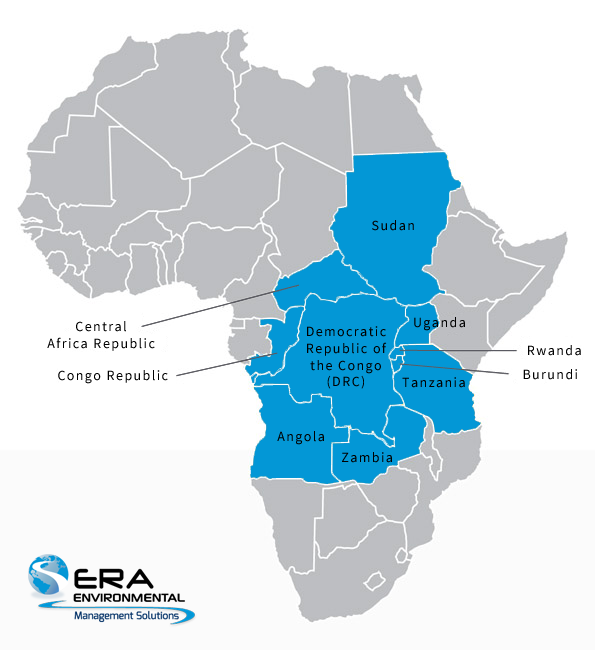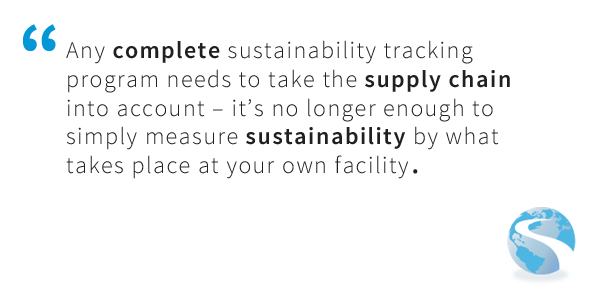Conflict minerals have long been a central point of focus in sustainability supply chain planning and manufacturing. However, the increased adoption of electric vehicles and other technologies that rely on these resources has brought about additional challenges. There are a variety of regulations related to conflict minerals that organizations must follow in order to avoid penalties and legal action, along with government incentives for responsible sourcing.
Following Your Supply Chain Down the Rabbit Hole
Regulations in the US and other countries regarding supply chain management have highlighted how your suppliers are one of the most important elements of your sustainability program. Sustainability officers are paying particular attention to how proper data collection practices throughout the supply chain can be used not only for assessing minerals but for so much more.
Conflict minerals encompass a variety of resources that originate primarily from areas with ongoing conflicts, limited governance, and forced labor conditions. Traditionally, the four most prominent conflict minerals have been tin, tantalum, tungsten, and gold, often referred to as 3TG.
Essentially, the use of these minerals, when sourced from covered countries – famously, the Democratic Republic of Congo (DRC) and other unstable African countries – is a peak concern because their use could directly or indirectly support human rights violations and finance violent military actions. Having this type of supplier in your supply chain, no matter how many tiers separate you, is the antithesis of being a sustainable manufacturer.
However, not all gold, wolframite, cassiterite, or columbite-tantalite can be classified as a conflict mineral. In fact, many companies ethically source these minerals and avoid the complications of conflict minerals by performing due diligence on their supply chains and finding vendors that do not extract these minerals from the DRC. That also includes minerals that are collected from scrap or recycled sources to be non-conflict since, at that point in the supply chain, their sale or use is unlikely to contribute financially to an armed conflict.

Most regulations consider any instance of these minerals that has been smelted or refined and kept outside any covered country to be “outside the supply chain.” In this state they are unlikely to have financially contributed to any human rights violations.
Material traceability is an essential aspect of maintaining compliance. Being able to properly manage vendors and documentation lets organizations demonstrate compliance and their commitment to sustainability by showing that they’ve taken the proper steps for ethical sourcing.
However, conflict minerals are just the tip of the iceberg when it comes to your sustainability tracking throughout your supply chain. In the same way, you expect vendors to know where they got their minerals, you should also expect them to be able to account for any toxicity in their goods and to be on top of any health risks associated with their product’s use.
In short, a sustainable business is built on a supply chain that shares information across its entire length. This is exceptionally important for larger OEMs, as drilling down to the primary source of your components can be nigh impossible when there are several degrees of separation. Despite this difficulty, as the chain links with the most authority, the ability to elicit change and improvement falls squarely onto you.
Conflict Mineral Reporting Under the Dodd-Frank Act
In 2010, the Dodd-Frank Wall Street Reform and Consumer Protection Act mandated the SEC to establish rules to address potential conflict minerals. The final SEC conflict minerals ruling came into effect on January 1, 2013, requiring annual reports on mineral sourcing. That gives businesses all year to determine if they presently use conflict minerals and 150 days after year-end to complete and submit the report.
The annual report is filed using SEC Form SD and covers the duration of the entire previous calendar year, regardless of the reporter’s fiscal year-end. The regulations specify reporting minerals containing 3TG materials, including columbite-tantalite (coltan), cassiterite, wolframite, and gold.
If you need to report, your responsibility is to perform a due diligence investigation on your supply chain and minerals to determine unequivocally if your minerals are conflict-free. This due diligence process is not heavily regulated; however, there are some stipulations.
Whichever process you use in your supply chain assessments, it must comply with either nationally or internationally recognized standards. You cannot simply invent a personal due diligence protocol and use it for SEC reporting. As part of compliance with this ruling, your due diligence will need to be audited by a private sector auditor who can sign off that you have undertaken every reasonable action needed in your supply chain management for assessing mineral status.
It should be noted that although the OECD guidance on due diligence and best practices is useful for managing your mineral supply chain, its suggested reporting procedures and strategies do not stand in for compliance with SEC regulations. While implementing OECD reporting practices for your own business will likely yield positive results overall, you will need to complete the SEC’s own reporting protocols regardless.

Any regulated minerals sourced from recycled or scrap sources will not require a private sector audit if the business can state with certainty these materials did not come from any other source. You will still need to conduct your due diligence prior to reporting, but this is a much simpler and less expensive task if all your minerals are from recycled sources. However, if you are at all unsure, or only a certain proportion of your minerals are from scrap/recycled sources, you will need to undergo an audit as well.
OECD Due Diligence Guidance
One of the due diligence frameworks widely used among manufacturers is the OECD Due Diligence Guidance for Responsible Supply Chains of Minerals from Conflict-Affected and High-Risk Areas. It offers a sound methodology for mineral sustainability tracking throughout any type of supply chain. Some of the protocols contained within the OECD guidelines include important takeaways such as:
- Adopt a company policy for the supply chain of minerals and clearly communicate it to suppliers and the public.
- Structure internal management to support supply chain due diligence.
- Establish a system of controls and transparency over the mineral supply chain. This includes a chain of custody, a traceability system, or the identification of upstream actors in the supply chain.
- Strengthen company involvement with suppliers. A supply-chain policy should be incorporated into contracts and/or agreements.
While these OECD strategies are vital for assessing the status of your minerals, they are also proven building blocks for any sustainability program in any industry. For example, ERA helps its OEM partners in the automotive industry track the potential toxicity of components that wind up in their final products throughout the supply chain as part of their sustainability planning. This type of sustainability tracking allows for far greater control of your reportable emissions and helps businesses make smarter purchasing decisions.
The Uyghur Forced Labor Prevention Act
While not focused on 3TG minerals, the Uyghur Forced Labor Prevention Act (UFLPA) is another important part of US critical minerals legislation. It focuses on restricting important materials from the Xinjiang Uyghur Autonomous Region (XUAR) of China, where the Chinese government has been accused of widespread forced labor.
Under the UFLPA, any raw materials sourced wholly or in part from Xinjiang are presumed to involve forced labor. They are banned from import to the US unless the importer can provide “clear and convincing evidence” that forced labor was not involved. Key minerals of focus under the act are lithium and graphite, both of which are in high demand due to their use in electric vehicle battery production.
Organizations that make use of materials potentially from Xinjiang must map their entire supply chain to the raw material level to ensure compliance. They must also carry out risk assessments and be prepared for a potential audit.
Tax Incentives for Responsible Sourcing
While many regulations concerning mineral sourcing focus on restricting imports, others use incentives to encourage good practices. The Inflation Reduction Act (IRA) plays a major role in regulating how critical minerals are sourced, particularly in the electric vehicle industry. It offers substantial tax incentives to encourage domestic production and sourcing of key battery materials like lithium, nickel, and graphite.
Under the IRA, vehicles only qualify for the full federal EV tax credit if a specific minimum percentage of the battery’s critical minerals are extracted or processed in the US or a country with a free trade agreement. Manufacturers can also meet the requirement by using recycled materials sourced from North America.
Suppliers that produce or process these materials within the US may also claim additional production tax credits under Section 45X of the IRA. To stay eligible, businesses must ensure their supply chains are free of Foreign Entities of Concern and be able to document the origin of all critical minerals used in their products. Obtaining these benefits requires clear visibility into the organization’s supply chain.
Putting Conflict Mineral Compliance Into Action
Conflict Mineral reporting illustrates that supply chain management can be used for more than logistics and purchasing. By tapping into the flow of information across your supply chain, you have the potential to account for your entire Triple Bottom Line, including embedded energy use and carbon footprint and tracking the human rights background of any material coming into your facility.
Regulations also underscore the challenges associated with supply chain management. In particular, they highlight how collecting data from each tier of your supply chain gets more complex the further along the supply chain you look. This information loss and opacity put your facility at risk, not only for using conflict minerals or other banned substances but also because it holds you accountable for your suppliers’ actions that you had no information about. It takes every supply chain link working together towards transparency to be confident about your own product. As the conflict minerals reporting protocol demonstrates, it will likely take pressure from the top to achieve this level of transparency.
Your team can maintain compliance with conflict minerals regulations with ERA’s Material Traceability and Supply Chain Software. Save time through robust automation while maximizing transparency across your entire supply chain. Schedule a discovery call today to find out more about how ERA’s software can help your operations.
This blog was co-authored by:



March 18, 2013
Comments